Eons ago, many millennia before written history, bizarre animals roamed the Earth. The most renowned of these prehistoric creatures were the dinosaurs. Countless films have been made featuring these great reptiles. But during the various epochs of our world’s prehistory there existed many other weird and wonderful beasts. And many of them had names that were even weirder.
You will find some of these to be even more fascinating than dinosaurs. It was in this era before the dominance of mankind that life on Earth underwent a great deal of evolution. And, in fact, the Earth itself, its land masses and oceans, also evolved drastically.
Ichthyostega
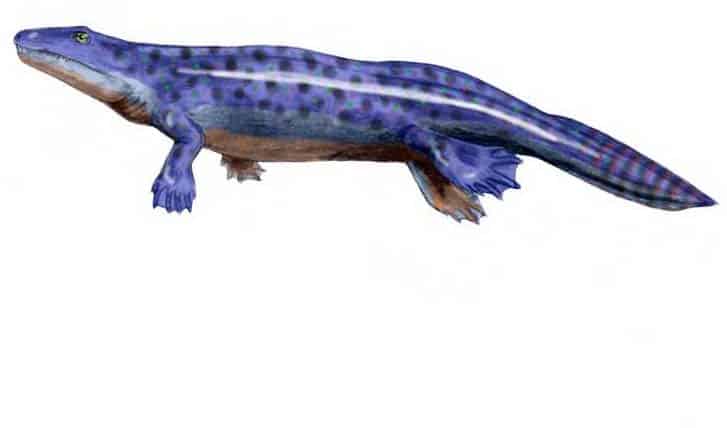
Living in the late Devonian period, Ichthyostega was one of the earliest amphibian-like animals. It had the head and tail of a fish, and it needed to return to the water in order to breed. The feature which differentiated Ichthyostega from lobe-finned fish was the limbs. In Ichthyostega, the fins were jointed, with leg and toe bones. Ichthyostega‘s foot was odd by modern standards. It had eight toes.
Sharovipteryx
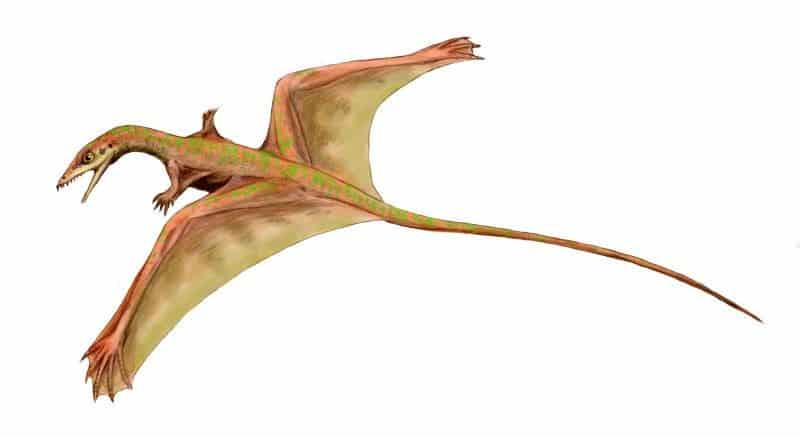
Scientists believe Sharovipteryx to be an ancestral link to the winged reptiles the pterosaurs. Not classified as a true pterosaur itself, it lived in the early Triassic period over 240 million years ago. It’s in a class of its own. The creature’s remains have been unearthed at the Madygen Formation in Kyrgyzstan, Central Asia. It was a mere one foot in length. It had four appendages which seem to have possessed thin flaps of skin like wings. The two forelimbs were quite short, and the rear limbs were much longer. Some theorize this design enabled Sharovipteryx to jump with ease. Paleontologists believe its mode of transportation was more like gliding than true flying.
Longisquama

This creature was what has been called a diapsid. The diapsids were a reptilian subclass which eventually would evolve into the most important reptile subclass. But it began as a small group of climbing and gliding reptiles. The diapsids lived in forests located on the supercontinent Pangea during the Triassic period. Thus, Pangea was the place Longisquama would have called home.
The skeleton’s most stunning feature is a double row of long scale-like structures running along its back, forming six to eight pairs. It had one pair of scales for each of its pairs of ribs. The scales had a central hollow vein, like bird feathers. But unlike feathers, Longisquama‘s scales seem to have been formed of flat sheets and not genuine plumes. This is the creature featured in this article’s header image.
Stagonolepis
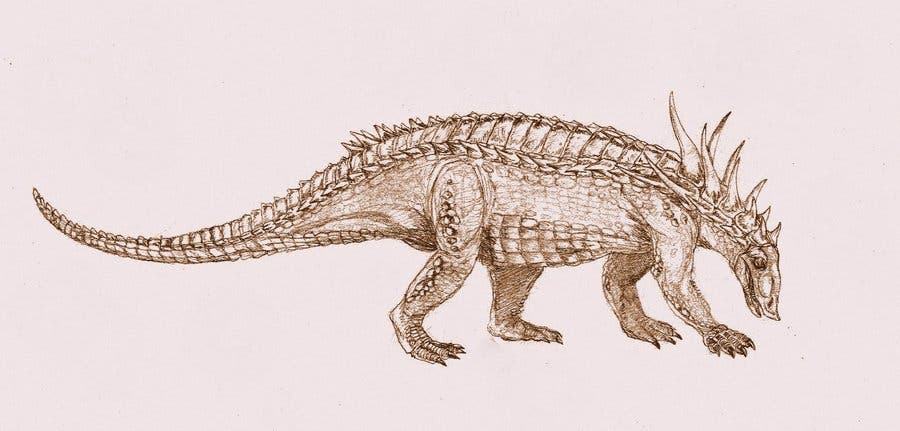
Stagonolepis was an aetosaur, sometimes also synonymically referred to as a stagonolepid. The Triassic world was filled with a vast variety of crocodilian species. The aetosaurs were unique among the early crocodiles since they were herbivorous. Unlike modern crocs, they were vegetarians. And Stagonolepis was one of the most prevalent of the stagonolepids at the close of the Triassic. Its long, narrow body was armor-coated, and it was capable of reaching a length of nine feet. Some artist renderings depict a creature which rather resembles a modern armadillo.
Casea
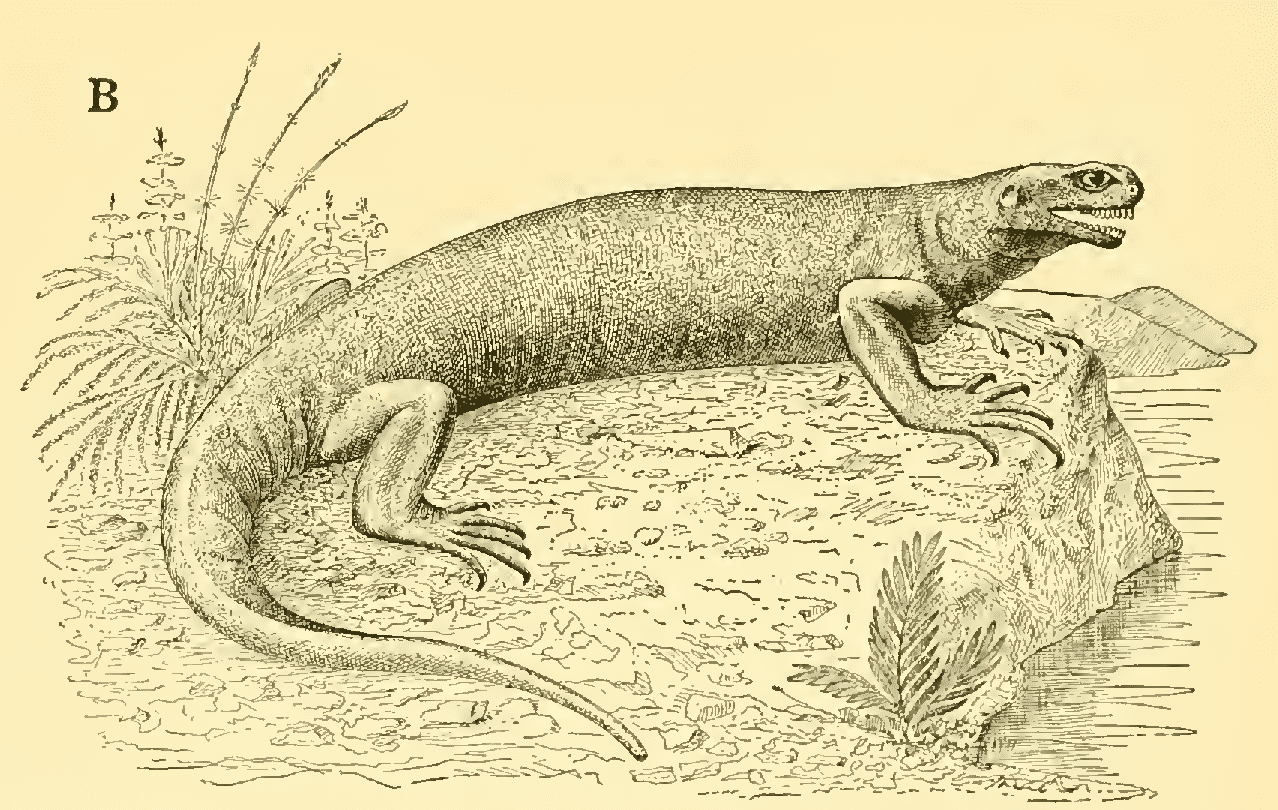
The caseids were another group of early reptiles. No reptile living today looked as odd as the Casea. The massive pig-like body, tiny head, overhanging upper jaw with peg-like teeth, and lower jaw with no teeth gave Casea a goofy look. These prehistoric creatures had large ribcages and were capable of reaching four feet long. Their prime occurred in the late Permian period. The term “casea” means “cheesy.”
Nothosaurus
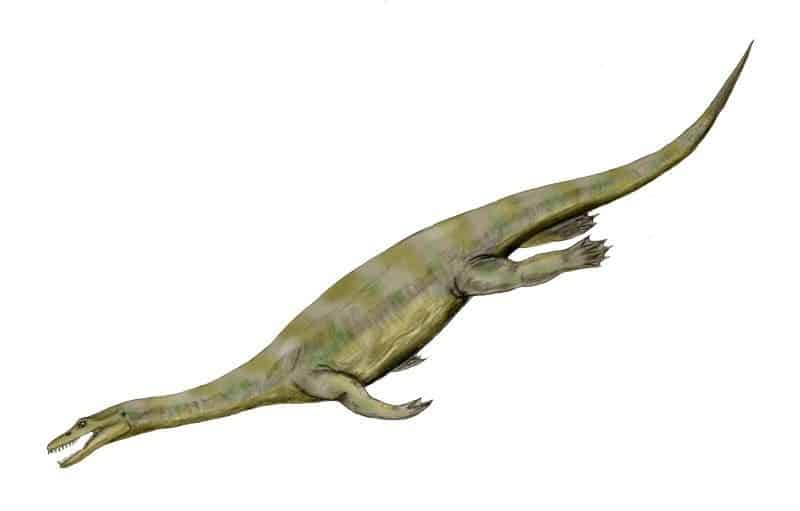
Nothosaurs were related to the plesiosaurs but did not always have the best physical capabilities for coping with marine life. These reptiles did not have gills. So they had to come up to the surface for fresh air. Their long necks which would have easily been able to sneak into a school of fish were a big asset when it came to catching their prey.
Nothosaurus is one example of a nothosaur. Others such as Ceresiosaurus, Pachypleurosaurus, and Lariosaurus are also classified as nothosaurs. A good deal of our basic understanding of these marine reptiles comes from Dr. Oliver Rieppel of the Field Museum, Chicago, Illinois. Nothosaurus itself lived in the mid-Triassic, and its name’s meaning is translated as “false lizard.” Scientists have considered two possibilities as to how the animals gave birth to their offspring. The eggs were laid on the sandy shores like modern sea turtles. Or a Nothosaurus would give live birth to its young at sea just as some sharks do today.
Stegosaurus
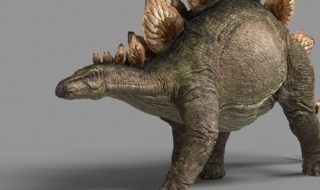
You know, it would be kind of unfair not to include at least one dinosaur in this list. (Although, cinema and literature have almost made them overrated.) What is so special or weird about Stegosaurus apart from the fact that it was a dinosaur? Well, it isn’t really. It is primarily included on this top ten list in order to clear up some misconceptions and mysteries surrounding its public consideration. Dwelling in the prehistoric Americas in the late Jurassic period, Stegosaurus had bony plates along its back and small ossicles covering its throat.
In relation to the creature’s mass, it has the smallest brain of all dinosaurs. Speaking of brains, here is another fun fact which some people still may have never heard. For a time, scientists were throwing out the hypothesis that a certain organ located in the tail of a Stegosaurus was responsible for performing some actions in the dinosaur’s posterior end.
However, the mass of nerves or whatever organ it may have been is no longer considered to have been a true brain. As for its renowned plates, scientists have made several speculations as to their function. They could have been for simple body defense when sparring with its peers or evading predators. They might have been for storing up heat during the day to then “burn up” after the sun went down. Or the plates even could have a means to attract mates.
Thylacosmilus
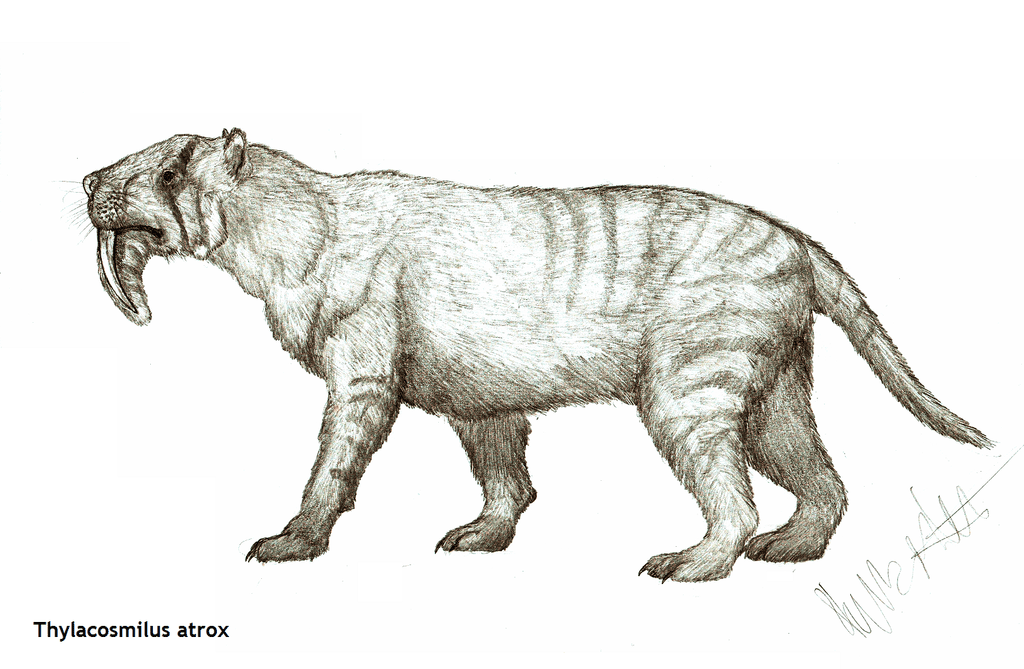
Thylacosmilus obviously has the body style of a saber-toothed tiger. Interestingly enough, the animal also happened to be a marsupial. A marsupial is simply an animal which has a pouch of skin in which to carry its newborn young for a period. Modern marsupials include kangaroos and opossums. Living in the late Tertiary period, Thylacosmilus had strong, long-lived family relationships. Any restoration is far from perfect since a full skeleton has never been found.
Tsaidamotherium
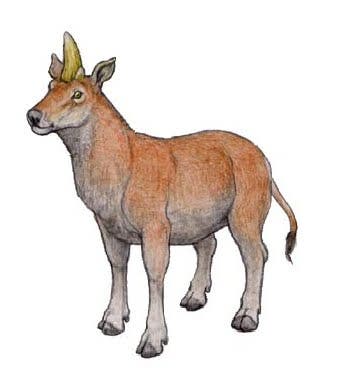
Considered a pronghorn, Tsaidamotherium lived in the late Tertiary and bears some resemblance to the musk ox of present-day. Its body shape seems related to that of bovines. Tsaidamotherium was a grazing creature like many of its Miocene peers and lived on the Mongolian plains. It possessed one great cylindrical horn ontop its forehead and directly in the center. Another much smaller horn was located directly adjacent to it.
The likely function that its larger horn is supposed to have carried out was perhaps for display to attract a counterpart of the opposite gender. At first glance then, this creature could resemble the description of the mythical beast the unicorn. Dougal Dixon states this same relation in The World Encyclopedia of Dinosaurs and Prehistoric Creatures.
Megatherium
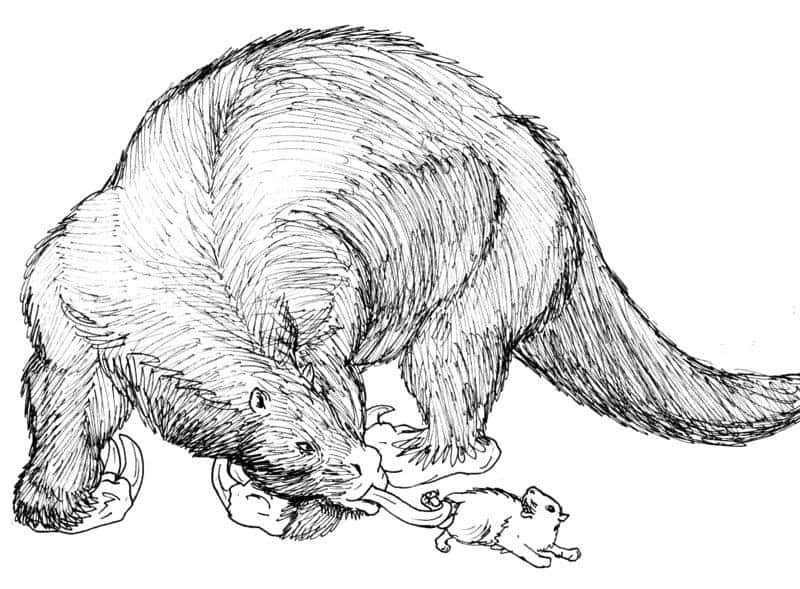
As the name implies, this brute was a pretty large mammal. It was actually a giant ground sloth related to modern sloths. An inhabitant of South America during the Quaternary period, an adult standing on its hind legs could reach a height of 20 feet. Megatherium was previously regarded as a slow tree ripper. But recent studies show that its great claws might have been used for stabbing and killing. If this was the purpose of its claws, it would make the giant sloth the largest predator of the South American plains.



